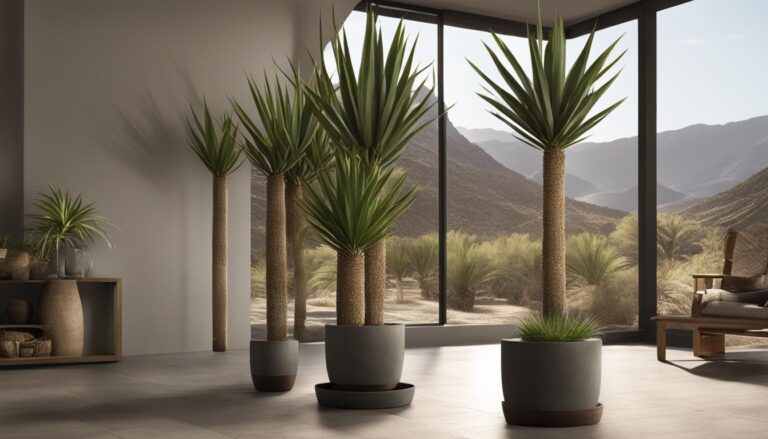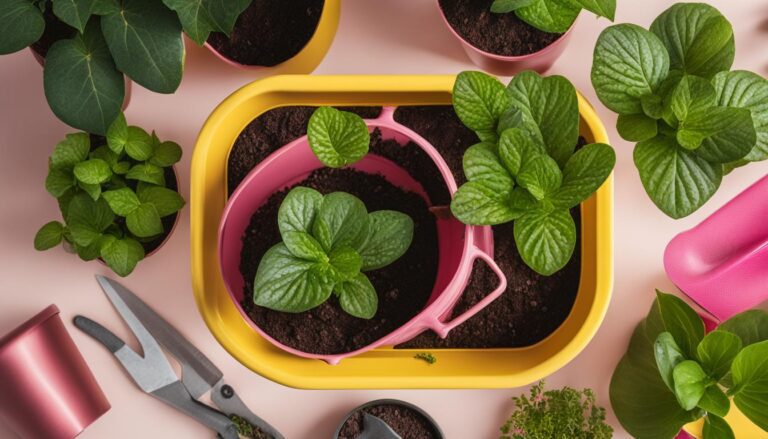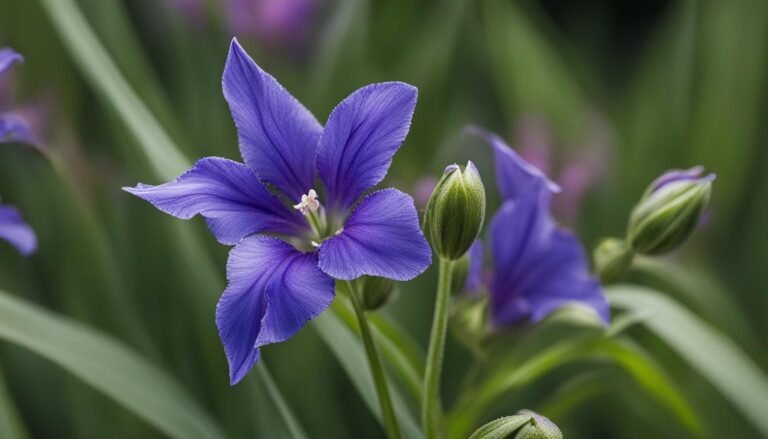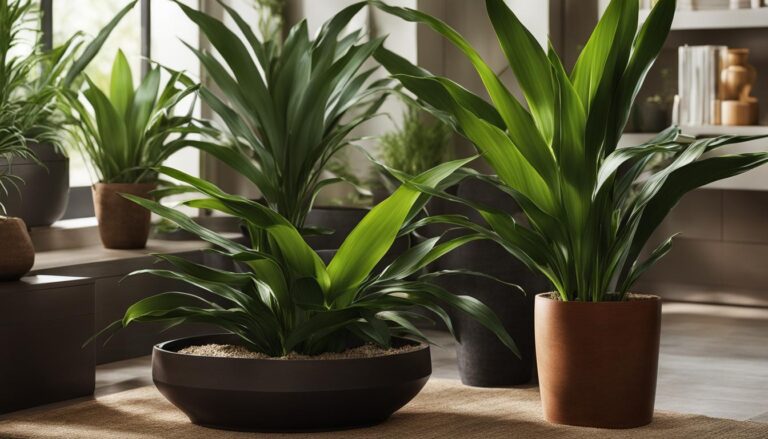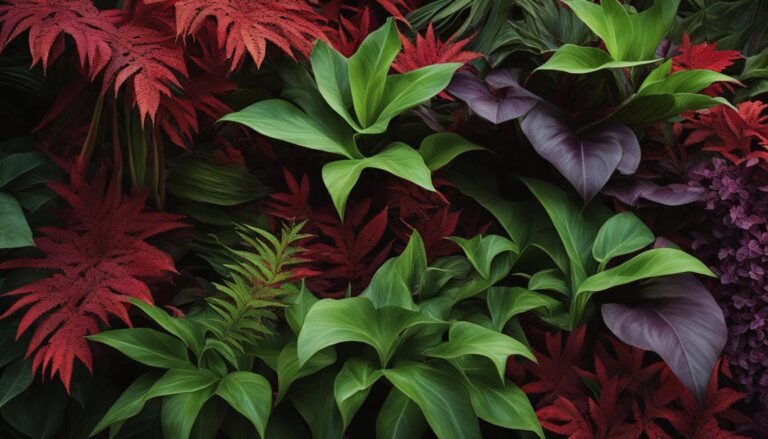
Welcome to my article on the Bird of Paradise (Strelitzia reginae), a mesmerizing tropical plant that captivates with its exotic beauty. With its vibrant, bird-shaped flowers and broad, banana-like leaves, this plant adds a touch of the tropics to any landscape or garden.
Not only does the Bird of Paradise possess stunning aesthetics, but it also has unique properties that make it a fascinating addition to any indoor or outdoor space. Its leaves act as natural filters, purifying the water in aquaponics systems, while its flowers attract beneficial pollinators and contribute to biodiversity.
However, it’s important to note that the Bird of Paradise is toxic if ingested, so care must be taken when handling it. In this article, I will delve into the popular varieties of Bird of Paradise, its lighting and watering requirements, and other important considerations for plant care.
Bird of Paradise Plant Care Guide
The Bird of Paradise (Strelitzia reginae) is a stunning tropical plant native to South Africa that is widely admired for its unique, vibrant flowers that resemble a bird in flight.
This exotic plant can bring a touch of the tropics to any indoor space, but it requires specific care to thrive. When grown indoors, it’s essential to mimic the plant’s natural environment as closely as possible.
This means providing plenty of bright, indirect sunlight to encourage the growth of its large, paddle-shaped leaves and, eventually, its signature flowers. Consistent watering is crucial, yet it’s important to allow the soil to dry out slightly between waterings to prevent root rot.
High humidity and regular feeding during the growing season will keep your Bird of Paradise healthy and happy.
While the Bird of Paradise is a fairly easy plant to care for, it does grow quite large, so space is something to consider before bringing one into your home.
It’s also known for its air-purifying qualities, as it can help to filter out indoor air pollutants, contributing to a healthier living environment.
It’s important to note that the Bird of Paradise is toxic to pets and humans if ingested, so it should be kept out of reach of children and animals. With the right care, this plant can be a breathtaking addition to your indoor garden, offering both beauty and benefits.
| Care Aspect | Details |
|---|---|
| Light | Bright, indirect sunlight. A few hours of direct sun is beneficial but not too harsh. |
| Water | Water every 1-2 weeks, allowing soil to dry out between waterings. Avoid overwatering. |
| Humidity | Prefers high humidity. Mist regularly or use a humidifier. |
| Temperature | Thrives at 65-70°F (18-21°C). Avoid sudden temperature drops and cold drafts. |
| Soil | Well-draining potting mix. |
| Fertilization | Feed with a balanced fertilizer every two weeks during the growing season (spring/summer). |
| Repotting | Repot every 2-3 years or when the plant becomes root-bound. |
| Toxicity | Toxic to pets and humans if ingested. |
| Air Purification | Known to filter indoor air pollutants. |
By adhering to these care tips, your Bird of Paradise can become a thriving, lively focal point in your home, bringing with it a natural flair and a touch of the wild.
Propagation Methods
Heading into the lush world of tropical plants, I’ve always been mesmerized by the Bird of Paradise. It’s like each plant is a living sculpture, unfurling its leaves like a fan to reveal blooms that could upstage any peacock.
So, naturally, I wanted to multiply my little slice of paradise. Propagating these beauties can be a bit of a challenge, but trust me, it’s as rewarding as sipping a cool drink under a sun-soaked sky.
The most reliable method I’ve used is division. It’s like helping the plant make its own little family. Wait until spring or early summer when the plant’s energy is up, then gently separate a clump with at least one fan of leaves from the mother plant.
It’s a bit like untangling a necklace chain—patience is key. Make sure each new plant has a good chunk of roots. Pot them up in rich, well-draining soil, and it’s like hitting the refresh button—they’ll start to establish their own root systems.
I’ve also heard whispers in the gardening community about seed propagation, but it’s a slow burn, taking years to flower, and who has that kind of patience? Not me, for sure. I stick to division—it’s like a shortcut through the scenic route.
Toxicity and Other Considerations
When it comes to the Bird of Paradise (Strelitzia reginae), its mesmerizing beauty is undeniable. However, it’s crucial to be aware of its potential toxicity.
The plant contains alkaloids and glycosides, which can cause gastrointestinal discomfort if consumed in large quantities. Therefore, it’s important to handle the Bird of Paradise with care and keep it out of reach of children and pets.
Aside from its toxicity, the Bird of Paradise also has some other considerations to keep in mind. While its vibrant flowers attract beneficial pollinators, contributing to the biodiversity of outdoor gardens, it’s not suitable for areas with freezing temperatures. This tropical marvel is sensitive to cold, so it’s best to provide it with a warm and sheltered environment.
Despite these considerations, the Bird of Paradise remains a stunning addition to any garden or indoor space. Its exotic flowers and unique appearance make it a focal point of admiration.
By providing the right conditions, such as proper lighting, watering, and fertilization, enthusiasts can enjoy the beauty and allure of the Bird of Paradise while ensuring the safety of their loved ones.
FAQ
Is the Bird of Paradise plant toxic?
Yes, the Bird of Paradise plant (Strelitzia reginae) is toxic if ingested. It contains alkaloids and glycosides that can cause gastrointestinal discomfort if consumed in large quantities. It is important to keep the plant out of reach of children and pets.
What are the lighting requirements for the Bird of Paradise plant?
The Bird of Paradise plant prefers bright, indirect light when grown indoors. When grown outdoors, it requires full sun or partial shade. It is important to provide some shade during the hottest parts of the day to avoid scorching the leaves.
How often should I water my Bird of Paradise plant?
The Bird of Paradise plant prefers well-drained soil and should be watered thoroughly but allowed to dry out slightly between waterings. It is important to avoid overwatering, as this can lead to root rot.
Can Bird of Paradise plants attract pollinators?
Yes, the colorful flowers of the Bird of Paradise plant can attract beneficial pollinators, contributing to the overall biodiversity of an outdoor garden.
What are some popular varieties of Bird of Paradise?
Some popular varieties of Bird of Paradise include the Orange Bird of Paradise (Strelitzia reginae), the White Bird of Paradise (Strelitzia nicolai), and the Mandela’s Gold Bird of Paradise (Strelitzia reginae ‘Mandela’s Gold’). Each variety has its own unique features and colors.

